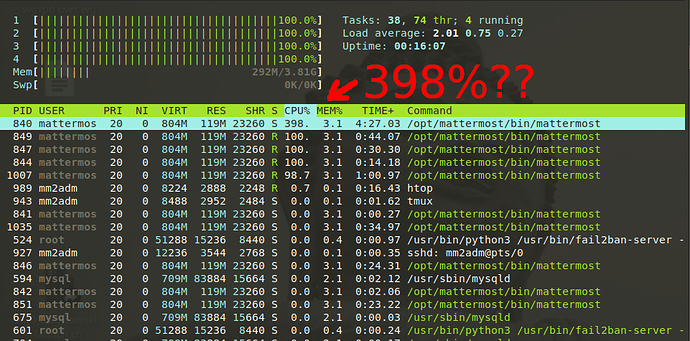I have a mattermost instance running on a Pi3 and so far am really impressed. There is only one issue that would prevent adoption. Bear with me - I know that ARM isn’t strictly supported and a 1Gb box is small, but the same box runs Matrix, SuiteCRM and Nextcloud without breaking a sweat.
My issue is this - I share a jpg image and as soon as the size exceeds (around) 500k, the upload looks complete (in terms of progress bar) but I then get a popup which says “Processing”. It will say that for up to 3-5 minutes depending on image size while all 4 cores show pegged at 100% CPU.
My question is - what is it doing while “Processing” - if I look at Nextcloud and Matrix which are doing basically the same tasks of copying the file to local storage and generating a small thumbnail plus some DB indexing, I just don’t understand what it being done in Mattermost that doesn’t seem to be required in the other apps?
I have trawled issues and posts and the most common responses were to the two caveats I mentioned at the top. I accept those but would dearly like to understand what is driving this behaviour.
Thanks
Mike
